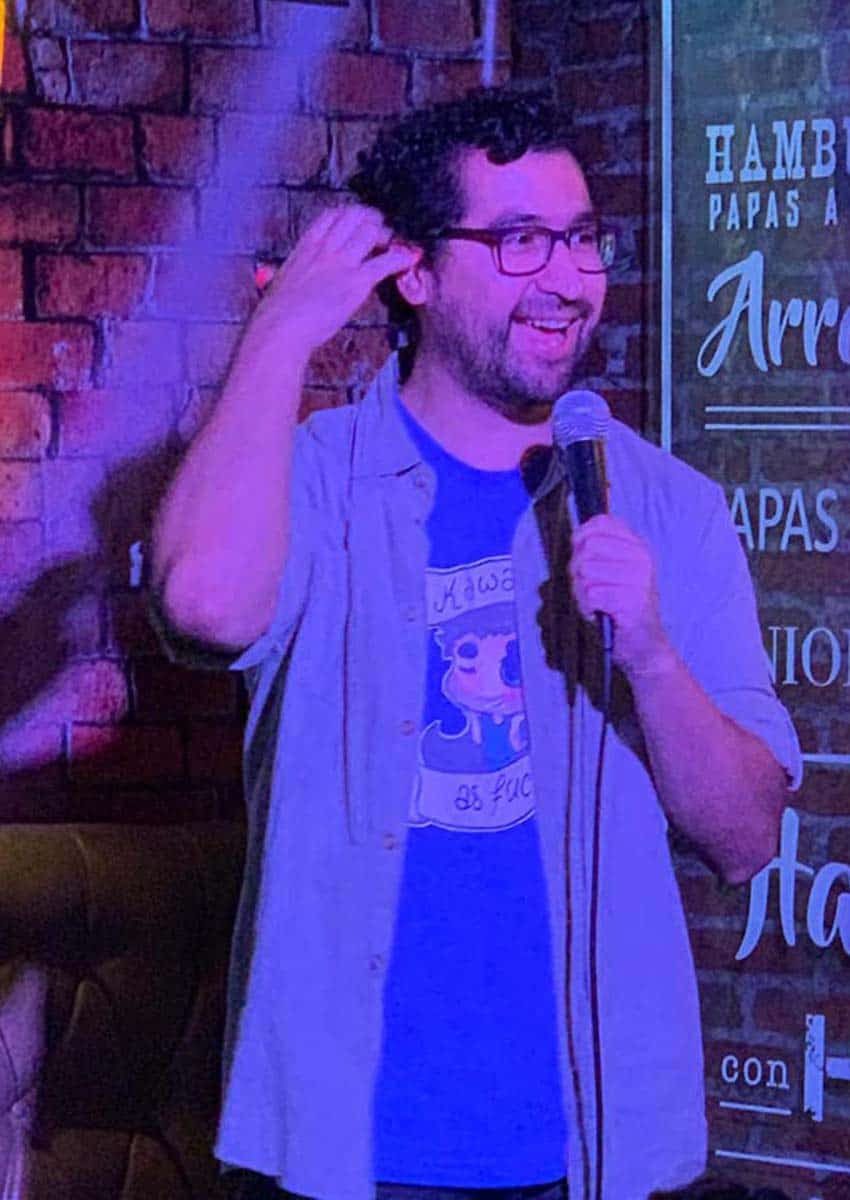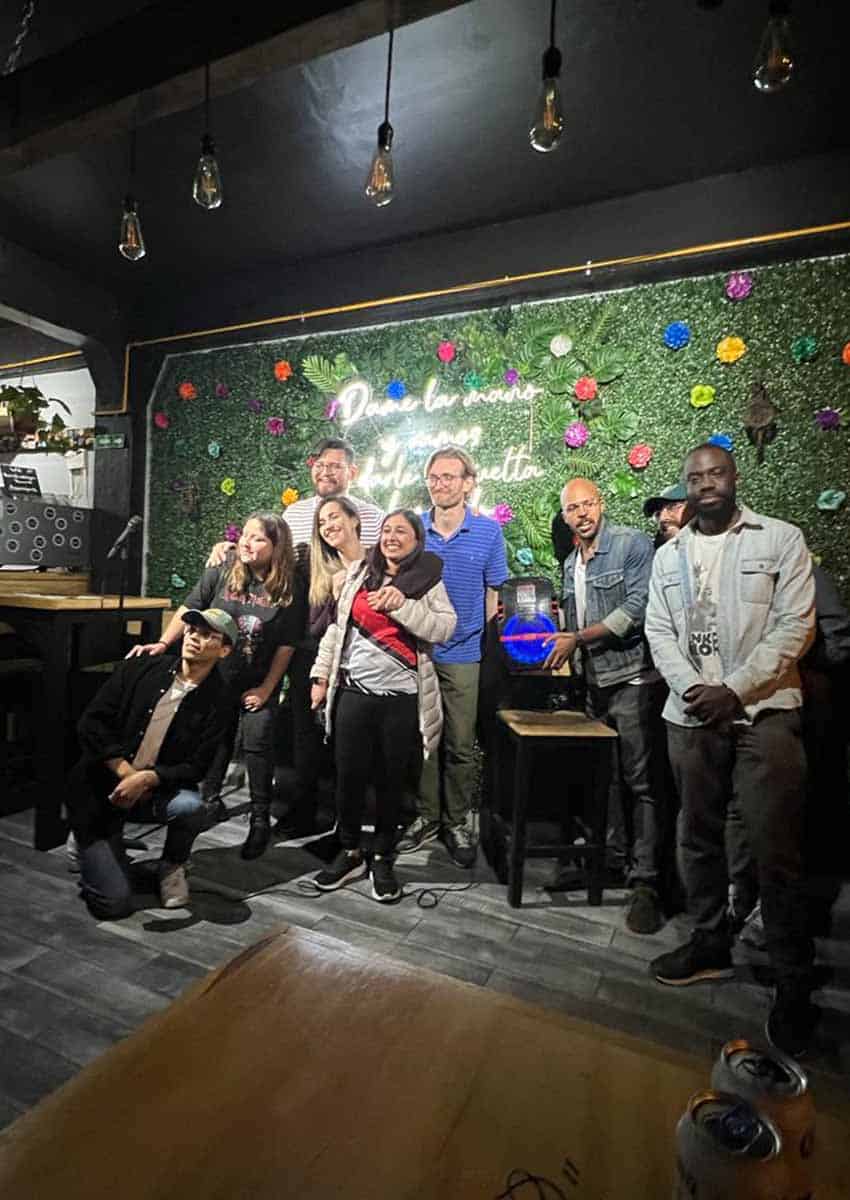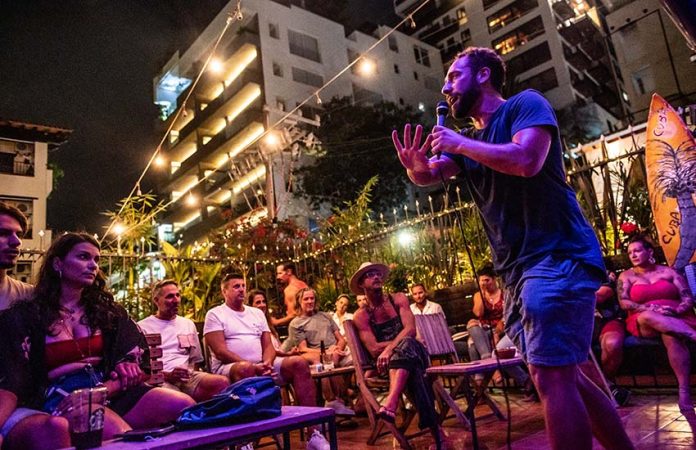English-language stand up in Mexico – is that even a thing? “Indeed it is.” says Mariana Ramírez of Funny Girl productions — a group of English-language comedians in Mexico City.
Mexico is no stranger to comedy, but U.S.-style stand–up has been around just over 10 years.
An import of a comedy style may seem counterintuitive because of significant language and cultural barriers. “Classic” Mexican comedians such as the legendary Cantiflas are almost unknown in the English-speaking world, because they focus heavily on word play and specific cultural references.
But U.S. standup relies more heavily on storytelling and observation, which allows foreign comedians to work in the U.S..
The obvious market for English-language standup is foreign tourists and expat residents, but perhaps the real reason it has become viable in Mexico is that there is a Mexican audience.
A significant number of upper-class Mexicans send their children to private bilingual schools, where they are taught English, which serve to cultivate highly proficient English speakers with international outlooks — and access to Netflix. Such a demographic has even produced shows of Mexicans doing English-language shows to Mexican audiences in Mexico.

The international school phenomenon is probably one reason why English-language shows first developed in Mexico City rather than in beach resorts or expat havens. The “foreignness” of the art form means that live stand-up still does best in U.S.-themed venues here such as Pinche Gringo’s BBQ, an early producer of live comedy shows in areas of the city popular with both foreigners and upper-class Mexicans. Mexico City also provides the gritty urban environment that stand-up shows thrive in, attracting audiences similar to ones found in places like New York.
Over the past decade, the English-language comedy scene here has grown slowly but steadily, with about 20 local comics now performing regularly. Noted foreign comics such as Louis CK, Jim Gaffigan and Tom Segura have successfully booked shows here.
What is different about English stand-up in Mexico is that performers and audience members alike can vary widely, from Mexicans practicing their English to foreigners from a number of different countries.
Martín León is a pillar of the Mexico City comedy scene, even appearing on Comedy Central. With success in Spanish under his belt, he decided to try his luck in English, starting by approaching youth hostels.
He connects with both the Mexican and foreign audiences for this niche because he attended bilingual schools growing up, and lived for a time in the U.S..
León partners with Ramírez to produce Funny Friends with comics working in both English and Spanish. Their main goal is to develop a talent pool of people living in Mexico and create a reputation for homegrown stand-up. Unlike León, Ramírez’s proficiency in English came not from fancy schools but her genuine love of the language and U.S. culture — a testament to her work ethic.
Mexico offers something to comics willing to make the move here, especially those looking for a different career path. Keenan Steiner, for example, was already an established New York-based comedian and regular visitor to Mexico when the pandemic hit in 2020. Although not a native speaker, he thought, “What if I try doing stand up in Spanish in Mexico and document it?” as a way to keep his comedy going after just about everything had shut down in New York.
Initially piggybacking his act on Puerto Vallarta’s vibrant drag and cabaret scene, he now splits his professional time between Mexico and New York.
His success is a main reason why Puerto Vallarta is now Mexico’s second live stand-up market. Audiences in PV are tourists looking for a good time, with Steiner’s jokes here “gayer” and “raunchier,” tailored to the very local culture.
Mexico City audiences tend to consist of people who live here and have more contact with Mexican culture. Steiner’s work in the capital focuses more on culture clash than he could ever do in PV.
The basic concept of U.S. stand-up does translate to Mexican culture, but with shows done here in English, details matter. Although U.S. comics are in demand, it can be difficult to bring them because of transportation costs and performance fees. Plus, there’s the challenge of finding comics who can adapt to performing in Mexico.
Shows need to be put together with care, not only considering the audience’s linguistic capabilities but their cultural ones as well. Venues offering a “foreign” experience, like ethnic restaurants, are still preferred because they attract the right kinds of Mexicans (and foreigners).
Dan Defossey, owner of Pinche Gringo, was able to bring foreign talent before the pandemic with sponsorship from Pepsi but had problems with some comics who could not or would not adapt their material or delivery.

Steiner agrees that doing standup in the other language is a lot more than translating jokes, and developed material not only for Mexico but different Mexican audiences.
One advantage, notes comedy night host Michael Weakley, is that Mexicans can laugh at themselves much more easily than Americans can. His only rule for comics is to not “simply trash” Mexico; a love for the country is important for a show to be successful.
There are no comics living in Mexico that work full-time only in English; most work in both languages and almost all have “day jobs,” as this is the nature of the beast. Interestingly enough, some comics from the Funny Friends show are clearly doing it as a sideline or even just a hobby. Their sets went beyond culture-clash issues and delved into general human issues such as relationship problems and even very esoteric topics like Yu-Gi-Oh.
Almost all the comics and promoters expect English stand-up to continue growing in Mexico, albeit slowly. Only a few shows have been performed outside of Mexico City and Puerto Vallarta. The Yucatán looks promising, but there are no professional performances yet in English-speaking expat havens like San Miguel de Allende or the Lake Chapala area.
But when it works, it’s magical, says Steiner.
“Some of my best moments come in Mexico City when everyone, Mexican and foreigner, are laughing and agreeing together.”
Leigh Thelmadatter arrived in Mexico over 20 years ago and fell in love with the land and the culture in particular its handcrafts and art. She is the author of Mexican Cartonería: Paper, Paste and Fiesta (Schiffer 2019). Her culture column appears regularly on Mexico News Daily.
